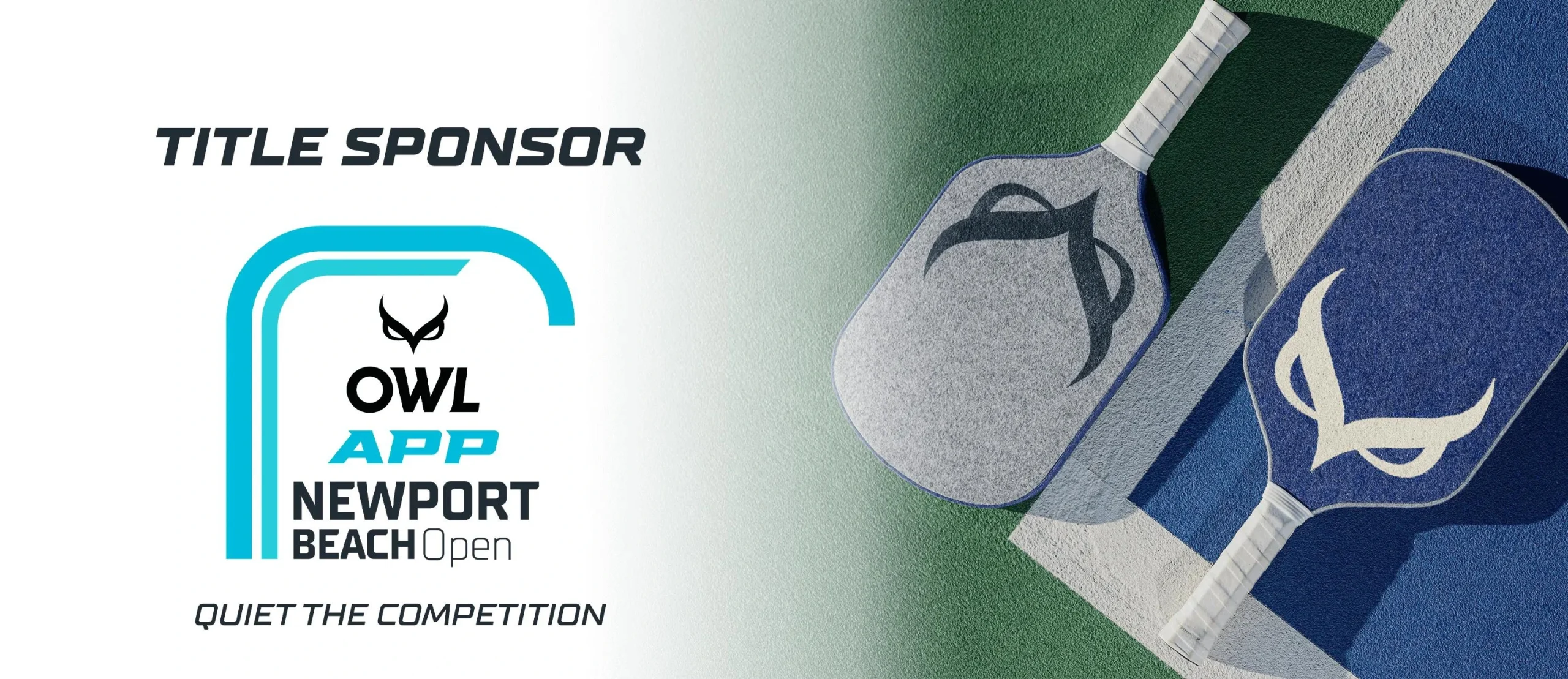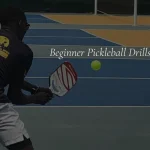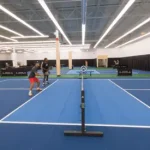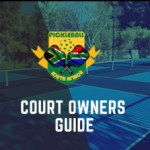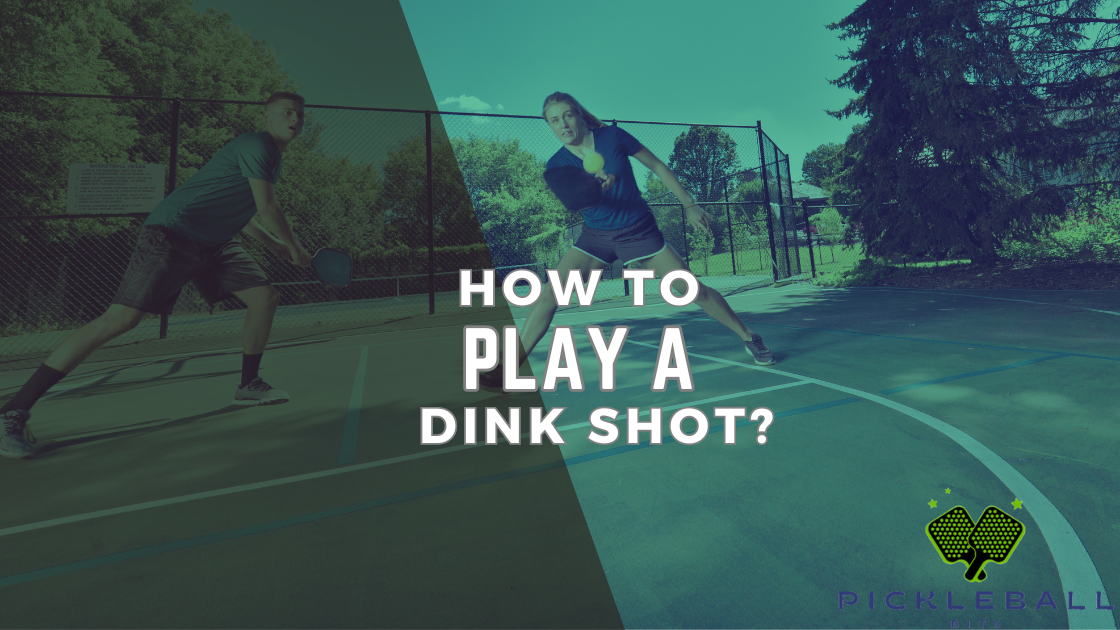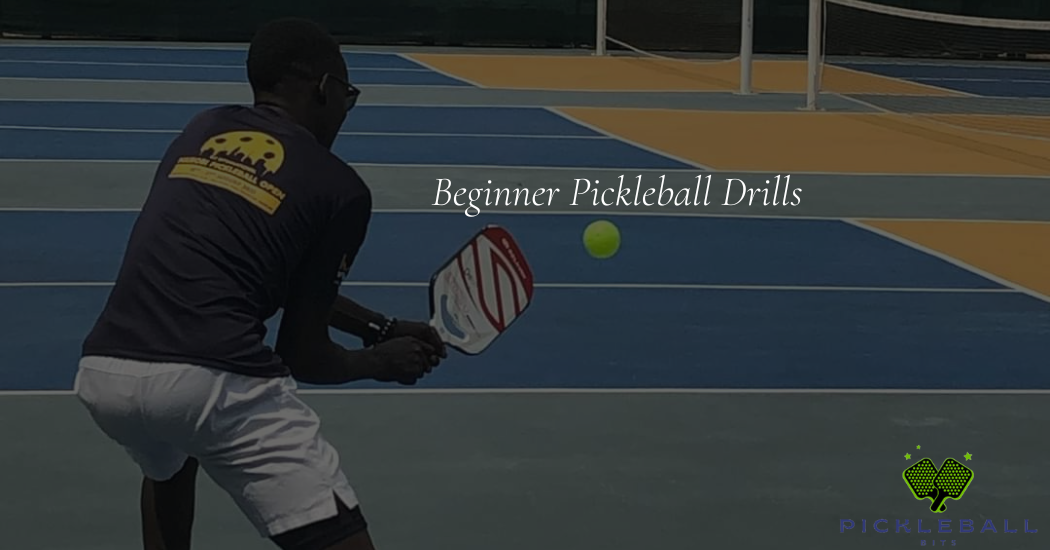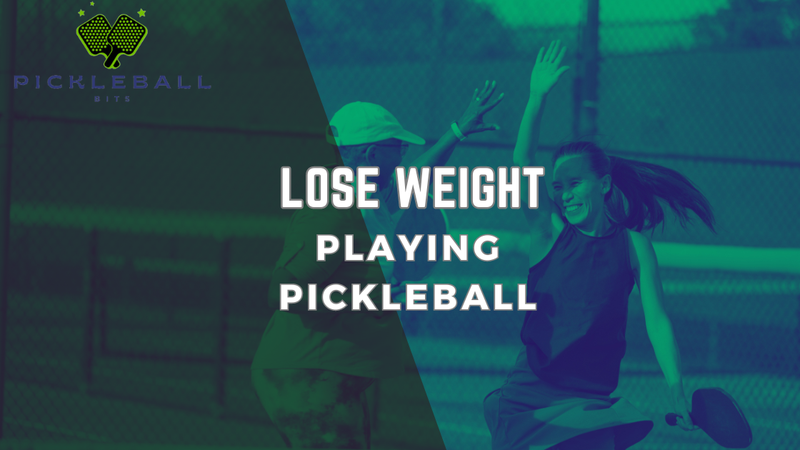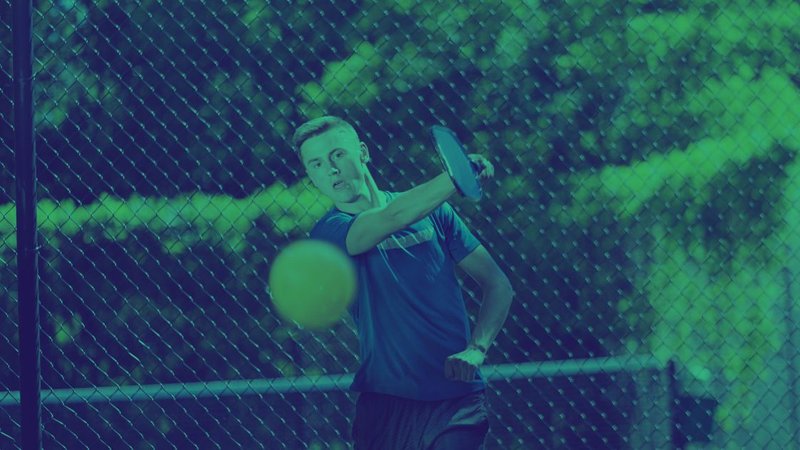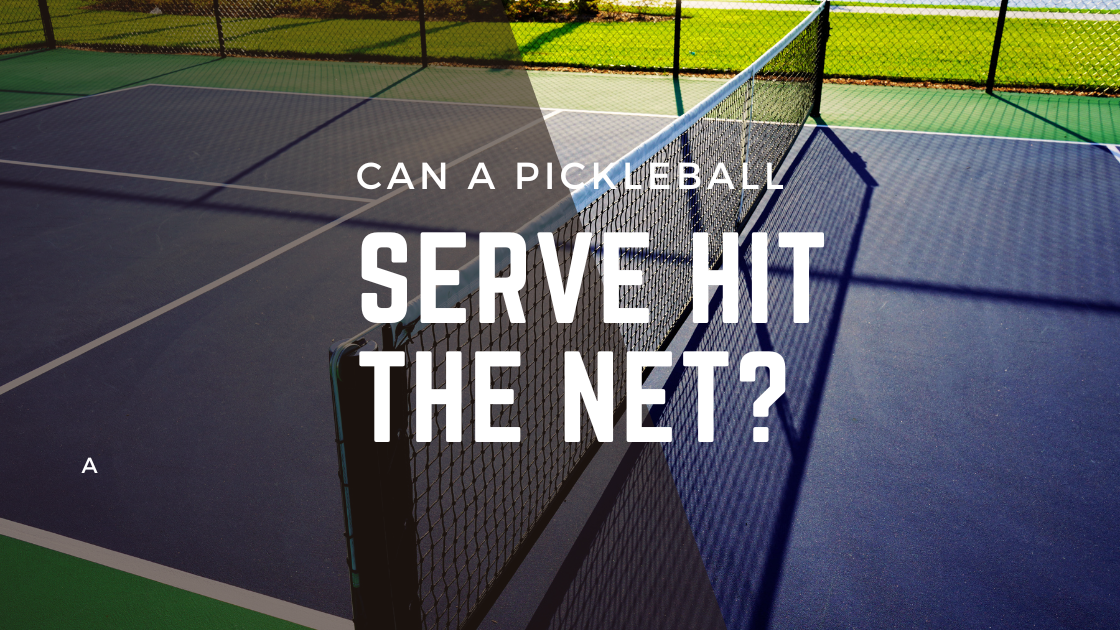The main difference between an average player and an advanced player in pickleball is their ability to consistently hit the ball into the kitchen. This part of pickleball is called soft game, and it’s arguably the most important thing to master if you want to improve.
Two of the main shots within the soft game are the dink and reset. Dinks are when you hit the ball in the kitchen from the kitchen, and resets are when you slow down hard shots and hit them into the kitchen, Usually from the transition zone as you’re moving forward.
This article will focus on how to play a dink shot, the techniques, and common mistakes to avoid.
Dink shots are not just about hitting the ball; they’re about strategy, control, and outsmarting your opponent. Whether you’re just starting or aiming to polish your skills, we’ll walk you through every step of playing a perfect dink shot.
Table of Contents
Understanding How to Play the Dink Shot
Dink shots are a big deal in pickleball and knowing how to play a dink shot effectively can completely enhance your pickleball game. Think of a dink shot as a gentle tap sending the ball just over the net, landing softly in the opponent’s kitchen (the non-volley zone). This isn’t about power; it’s about being innovative and precise.
USA Pickleball describes a dink as a soft shot, designed to arch over the net and land in the non volley zone.
Why are dink shots so important?
As you may already know some pickleball tips for intermediate to advanced players, remember, dink shots are like chess moves in pickleball. You’re not trying to smash the ball. Instead, you’re playing it cool, making it challenging for your opponent to hit a strong return. When you dink, you’re keeping the ball low, making the other player reach down to hit it back, which is tricky for them.
A good dink shot can turn the tables in a game. It’s about patience, control, and making smart moves. Whether you’re new to pickleball or looking to enhance your skills, mastering the dink shot is an absolute game-changer.
Let’s dive into how to play a dink shot and the most effective ways to make them the best part of your game!
How To Play a Dink Shot? The Mechanics
To truly master how to play a dink shot in pickleball, it’s essential to dive deep into its mechanics. A perfect dink shot blends precision, control, and strategic positioning. Let’s break down the key components.
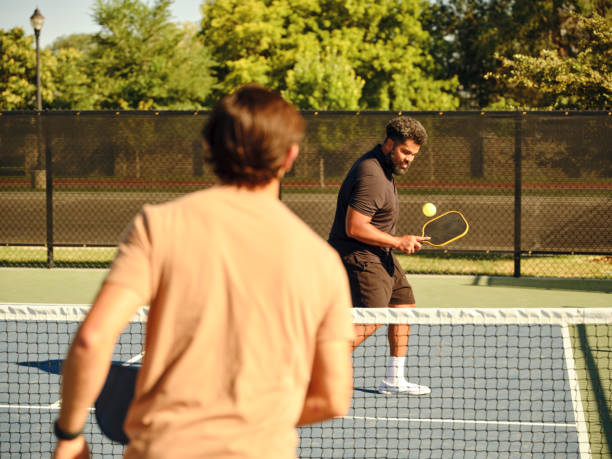
Stance and Positioning
The foundation of an excellent dink shot starts with your stance. Stand close to the non-volley zone line, feet shoulder-width apart, knees slightly bent, and your weight balanced on the balls of your feet. This athletic stance keeps you ready to move in any direction quickly.
Paddle Grip and Position
Grip your paddle with a relaxed yet firm hold, using what’s known as a continental grip – like you’re shaking hands with your racquet. Keep it out in front of you at a comfortable distance, always ready for a quick, controlled response.
Ball Contact And Follow-Through
Make contact with the ball in front of you, aiming for a spot just under the ball to create a gentle upward arc. The goal is to have the ball peak on your side of the net and then drop into the opponent’s kitchen. Follow through with your shot, but remember, the movement is subtle.
Practice and Patience
Like any skill, perfecting the dink shot takes practice. Start by hitting the ball against a wall or with a partner, focusing on the consistency of your shots. Remember, the key is to keep the ball low and unattackable, forcing your opponent to lift the ball, which can lead to errors on their part.
Pro Tip: A well-executed dink can set the stage for winning points and be a significant advantage in your pickleball toolkit.
Watch How to Play A Dink Shot 101:
Executing the Dink Shot
Mastering the execution of the dink shot in pickleball involves understanding three critical aspects: the point of contact with the ball, the trajectory and speed of the shot, and maintaining control and precision throughout the execution. Here’s a deeper look into each of these elements.
How to Contact the Ball for A Precise Dink Shot?
- Ideal Contact Point: The key to a successful dink shot lies in hitting the ball at the right moment and place. Aim to contact the ball when it’s slightly in front of you and at a lower point, close to your knee height. This positioning allows for better control and a gentle lift to the ball.
- Paddle Angle: Keep your paddle face slightly open at the point of contact. This helps in giving the ball a gentle arc, ensuring it clears the net but doesn’t fly too high to be attackable.
- Soft Touch: Use a soft, cushioned touch. You’re not driving the ball; you’re guiding it over the net. Think of it as a gentle push rather than a hit.
The Trajectory and Speed of an Effective Dink Shot
- Creating the Arc: An effective dink shot travels in a gentle arc. The apex of this arc should be on your side of the net, dropping into the opponent’s kitchen. This trajectory makes it difficult for your opponent to aggressively return the shot.
- Controlling Speed: The speed of your dink shot should be slow and deliberate. It’s not about power, it’s about placing the ball precisely where your opponent can’t attack it. A slower shot gives you more control over the trajectory and landing spot.
Maintaining Control and Precision During the Shot
- Body Movement: Your body should be in a stable and balanced position throughout the shot. Avoid excessive movement or overreaching, as this can lead to loss of control.
- Consistent Swing: Maintain a consistent, smooth swing for each dink. Avoid sudden jerks or changes in your swing pattern, as this can affect the shot’s precision.
- Focus and Patience: Keep your eyes on the ball and stay patient. Rushing your shots can lead to errors. Dinking is as much a mental game as it is a physical one. Stay focused on your strategy and don’t be tempted to deviate into a power game.
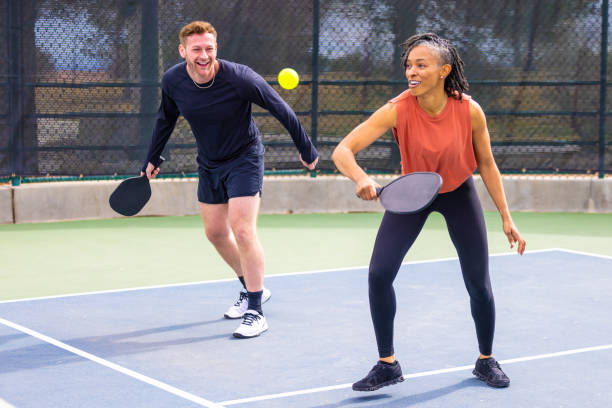
Advanced Dink Shot Techniques
Enhancing your pickleball game with advanced dink shot techniques can give you a significant edge over your opponents. Let’s explore how to execute crosscourt dinks effectively, incorporate volleys into your dink strategy, and create pressure with your dink shots.
Executing Crosscourt Dinks Effectively
- Understanding Angles: Crosscourt dinks utilize the wider angle of the court, making them harder for your opponent to return. Practice hitting the ball diagonally across the net to land in the farthest corner of your opponent’s kitchen.
- Using the Net to Your Advantage: The net is lower in the center, which can be an advantage for crosscourt dinks. Aim for a soft shot over the lower part of the net to make your dink less attackable.
- Disrupting Opponent’s Positioning: Crosscourt dinks can force your opponent to move laterally, potentially pulling them out of position. This can create openings for you to exploit with your next shot.
Incorporating Volleys into Your Dink Strategy
- Volley Dinks: These are dinks taken out of the air before they bounce. By volleying a dink, you shorten the time your opponent has to react, increasing their chances of making a mistake.
- Positioning and Readiness: Stay close to the kitchen line and be ready to move forward. A good volley dink requires quick reflexes and the ability to read the game.
- Controlled Paddle Movement: Keep your paddle up and in front of you. Use a gentle push to direct the ball softly into the opponent’s kitchen, focusing on placement rather than power.
Strategies to Create Pressure with Dink Shots
- Consistent Low Shots: Keep your dinks consistently low over the net. This forces your opponent to continually hit upward, making it hard for them to generate offensive power.
- Varying Shot Placement: Don’t be predictable with your dinks. Mix up your shot placement – sometimes straight across, sometimes diagonal, and other times deep into the kitchen. This variation keeps your opponent guessing and on the move.
- Exploiting Weaknesses: Pay attention to your opponent’s weaknesses. Do they struggle with backhand shots? Are they slow to move to one side? Use your dinks to target these weak areas, increasing the pressure on them.
Defensive and Offensive Dink Strategies
Mastering both defensive and offensive strategies with dink shots in pickleball can dramatically change the course of a game. A well-placed dink shot is a powerful tool for neutralizing strong opponent plays, forcing errors, and seamlessly transitioning from defense to offense.
Defensive Dink
When it comes to using dink shots defensively, the key is to neutralize the power and aggression of your opponent. If they’re hitting hard shots, a soft, well-placed dink can slow down the pace and bring the game back to a more controlled, manageable rhythm.
By consistently dropping these gentle shots into their kitchen, you force them to play your game, reducing their chances to unleash powerful smashes or drives. This tactic requires precision and patience, as your goal is to wait for an error or a weaker return that opens up an opportunity for you.
Offensive Dink
On the offensive front, strategic placement of your dink shots can be just as impactful. Aim your dinks in a way that challenges your opponent’s comfort zone. For example, if you notice they have a weaker backhand, direct your dinks to that side.
The idea is to keep them guessing and moving, increasing the likelihood of a mistake. A well-executed dink can force your opponent to stretch, reach, or even scramble, leading to less accurate returns that you can capitalize on.
Transitioning From Defense to Offense Using Your Dink Shots
The real art lies in transitioning from defense to offense using your dink shots. This involves reading the game and your opponent’s movements. As you neutralize their play with your defensive dinks, watch for any signs of frustration or fatigue.
The moment you sense a lapse in their concentration or position, shift your strategy. Start placing your dinks more aggressively, perhaps deeper into the kitchen or with a slight increase in pace, to open up the court. This shift can catch your opponent off-guard, providing you with opportunities to take more offensive shots and gain control of the rally.
Common Mistakes and How to Avoid Them
Dink shots, while essential, can be tricky, and certain common mistakes can hinder their effectiveness. Identifying and correcting these errors is crucial for improving your dink game.
Overhitting The Ball
The essence of a dink shot is its softness and control, not power. When players exert too much force, the ball often sails too high, becoming accessible for the opponent to attack. To avoid this, focus on a gentle push rather than a swing, and practice maintaining a consistent, light touch.
Improper Positioning
Standing too far back from the kitchen line or needing to be in a ready stance can limit your ability to respond effectively. Always stay close to the kitchen line, with knees slightly bent, and paddle up, prepared for the next shot.
Poor Paddle Control
Ensure your grip is tight enough and your wrist stays firm, allowing for more precise shots. Practice these techniques consistently to develop a feel for the right amount of touch and control required for effective dinking.

Our Final Thoughts On How to Play a Dink Shot
We wrap up how to play a dink shot in pickleball; it’s about combining finesse, strategic thinking, and consistent practice. From understanding the basics of executing a dink shot to incorporating advanced techniques and strategies, each element is critical in enhancing your overall gameplay. Remember, the most effective dink shots are well-placed, controlled, and precisely executed.
Read More Guides: How To Choose A Pickleball Paddle


